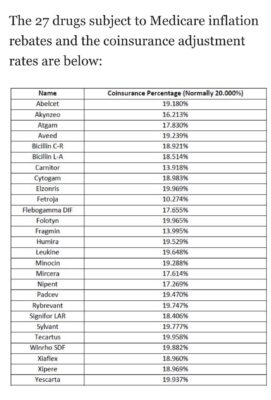Feds’ first clawbacks, TikTok yet again, why cough syrup’s being pulled, and more
16 Mar 2023
Posted by Andrew Kantor
Feds sue Rite-Aid
It’s not quite part of the whole opioid mess, but it’s close. The DoJ is suing Rite-Aid for filling obviously unnecessary or off-label-in-a-questionable-way prescriptions, like “‘trinities,’ a combination of opioids, benzodiazepine, and muscle relaxants preferred by drug abusers for their increased euphoric effect.”
But it wasn’t entirely about the pharmacists, some of whom knew something was afoot.
The Justice Department also said Rite Aid intentionally deleted some pharmacists’ internal warnings about suspicious prescribers, such as “cash only pill mill???”, while admonishing them to “be mindful of everything that is put in writing.”
Saving you a click
“Too much of this ingredient leads to autoimmune diseases”.
Salt. It’s too much salt.
[I]t is bad for immune cells, creating patterns of gene expression and activity seen in a variety of autoimmune diseases such as multiple sclerosis, lupus, rheumatoid arthritis, and type-1 diabetes.
27 drugs slated for clawbacks
HHS has released the list of the first 27 drugs that pharmaceutical companies will have to pay rebates on because they raised the prices faster than the rate of inflation.
Not only will the companies be refunding taxpayers’ money, but going forward Medicare’s 20% co-pay will be adjusted for those drugs to be 20% of the inflation-adjusted price rather than the pharma-companies’ price. (That co-insurance amount will be adjusted each quarter as HHS tracks drug prices and the inflation rate.)
Here’s a chart that helps (click to enbiggen):
Once again, the tired old line about paying for research and development is shown to be a load of hooey: One of the drugs affected, Pfizer’s Fragmin, was approved almost 30 years ago.
CMS’s detailed explanation is here (2-page PDF).
Down the road: a bitter asthma treatment
There are bitter-taste receptors outside of the mouth, including in the lungs, and they have an interesting quality: When activated, they help open the airways.
Hmm. Sounds like a potential target for asthma or COPD treatment. That’s what German researchers thought, and they also knew that the NSAID flufenamic acid can activate some of those receptors … just not very well.
The next step: Create a more potent analog and test it therapeutically. They found that — as you probably guessed — “replacing a phenyl ring with a 2-aminopyrimidine and substituting a tetrazole for a carboxylic acid group was a promising strategy” — and have already created a compound that’s six times more potent than flufenamic acid.
Right now it’s all in the lab stage, but new treatment pathways are always welcome.
Use pharmacy techs to help cancer patients
Patients who need oral oncolytics probably have a high enough level of stress already, and being hit by the high cost of the meds just adds to the pain.
Who can help? Pharmacy technicians — especially those trained in retail pharmacies. So explains one CPhT in Drug Topics.
“We know how the pharmacy system works and how prescriptions are billed. And we are familiar with copay cards and the terms they work under.”
They also know where to look for copay cards (beyond a Google search), which ones will work with Medicare part D, and what other patient assistance programs are available.
Captain Obvious sticks to this week’s challenge
“Mpox Information On TikTok Videos Often ‘Unreliable And Incomplete,’ Study Finds”
Short Takes
Cough syrups off the shelves
Both the EU’s and UK’s version of the FDA* are pulling OTC cough meds that contain pholcodine because of potential allergic reactions.
* The European Medicines Agency and the Medicines and Healthcare products Regulatory Agency, respectively
Just gonna put this out there
Skunks in Canada were found to have been killed by the H5N1 bird flu.



